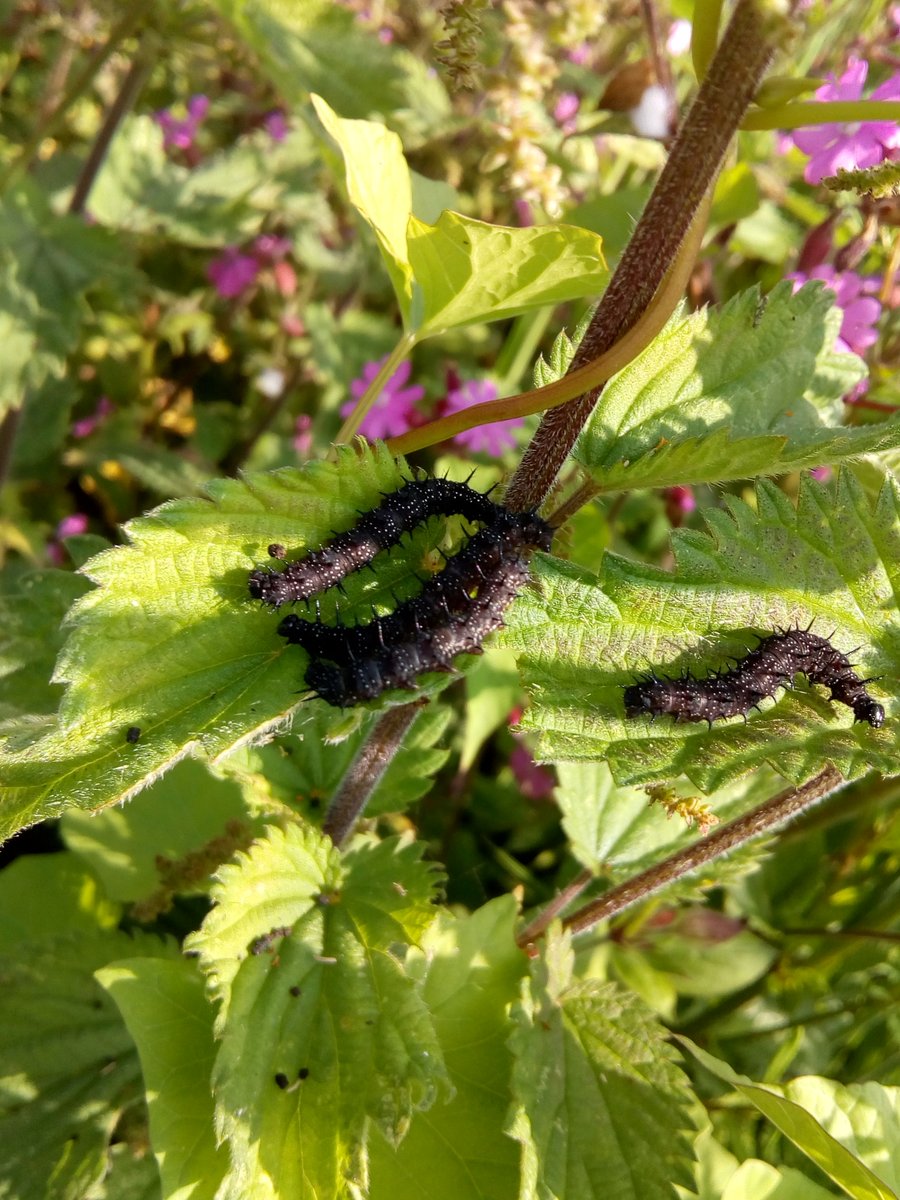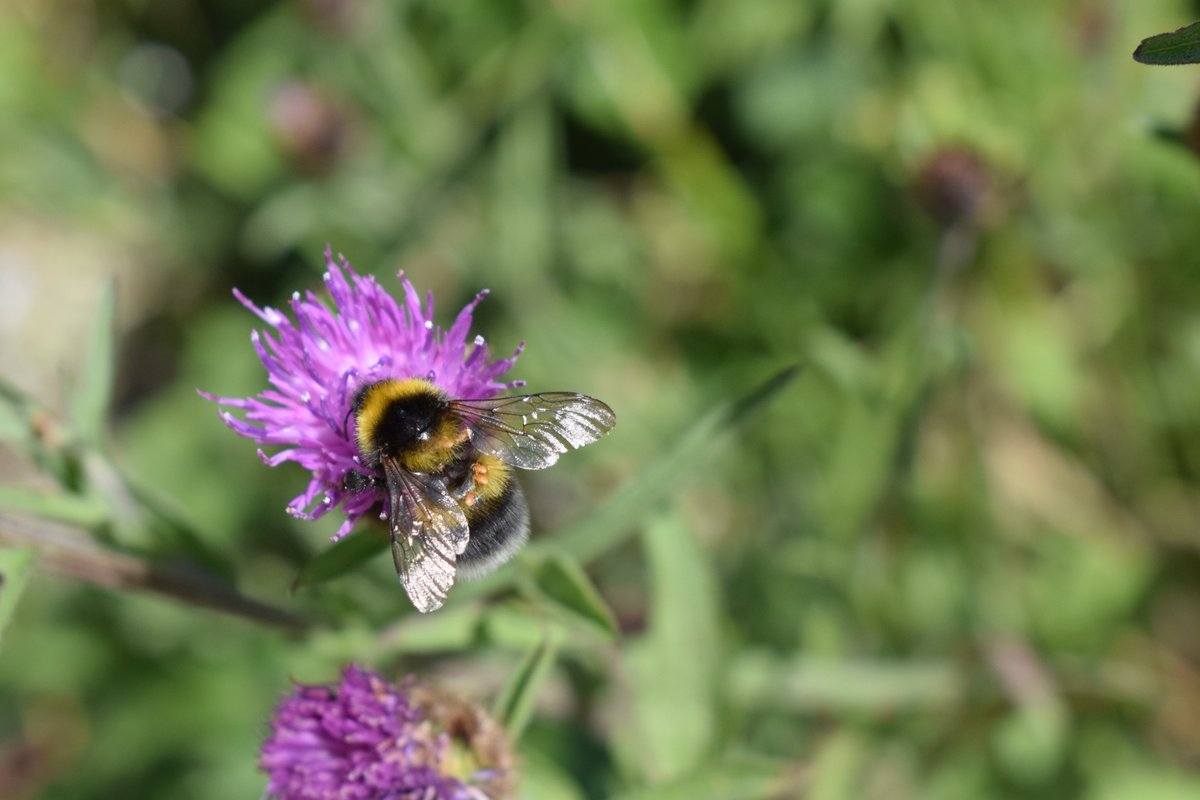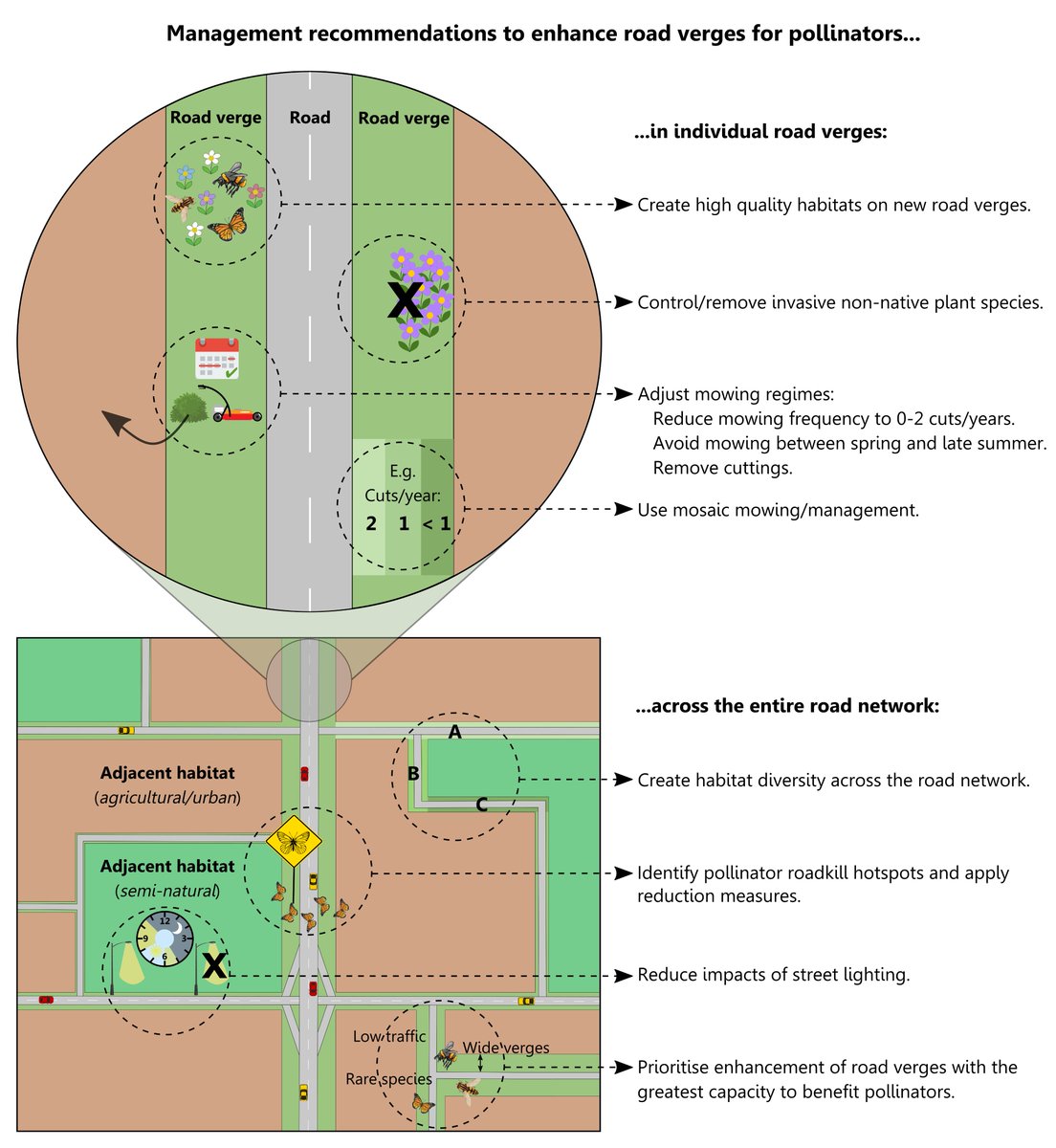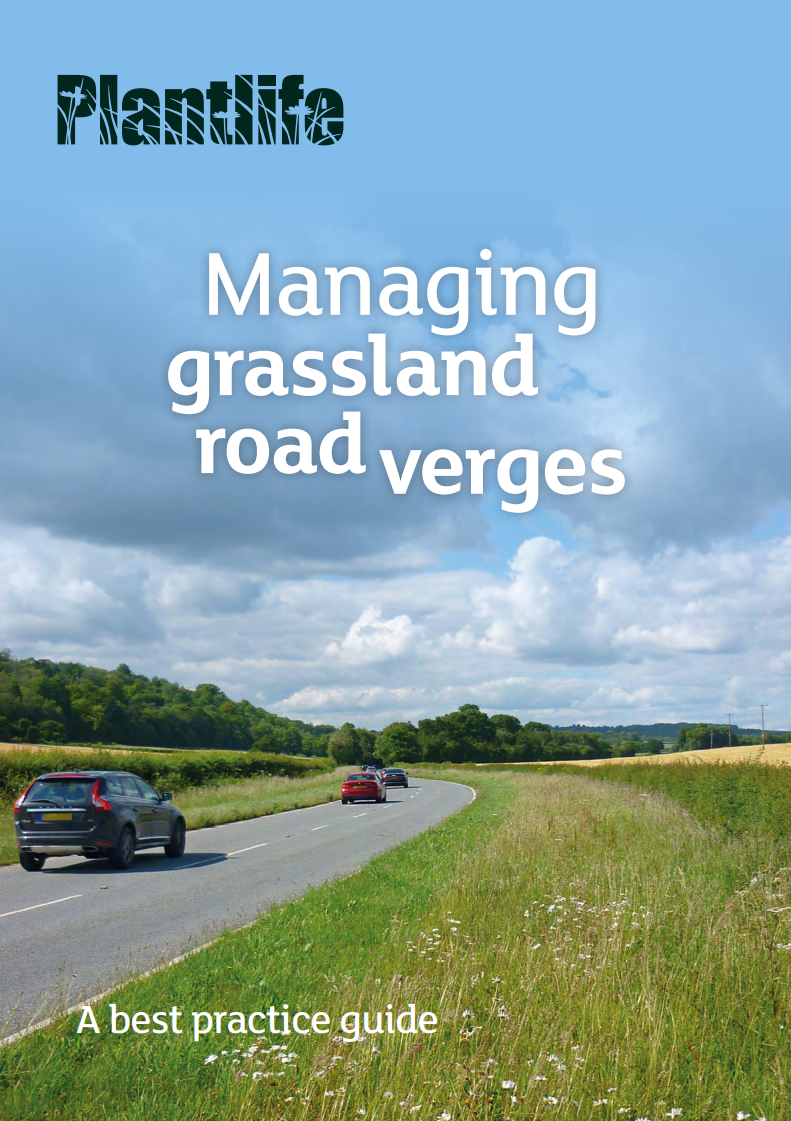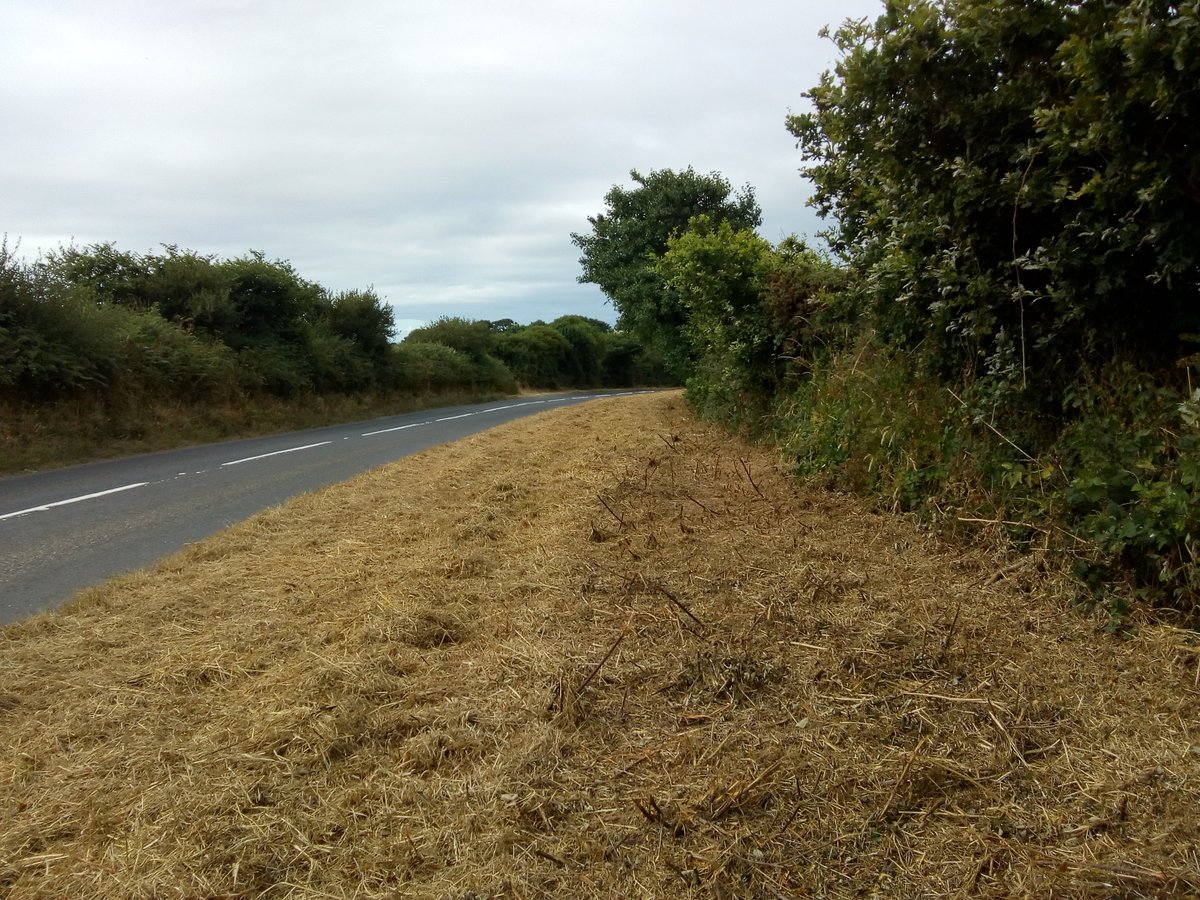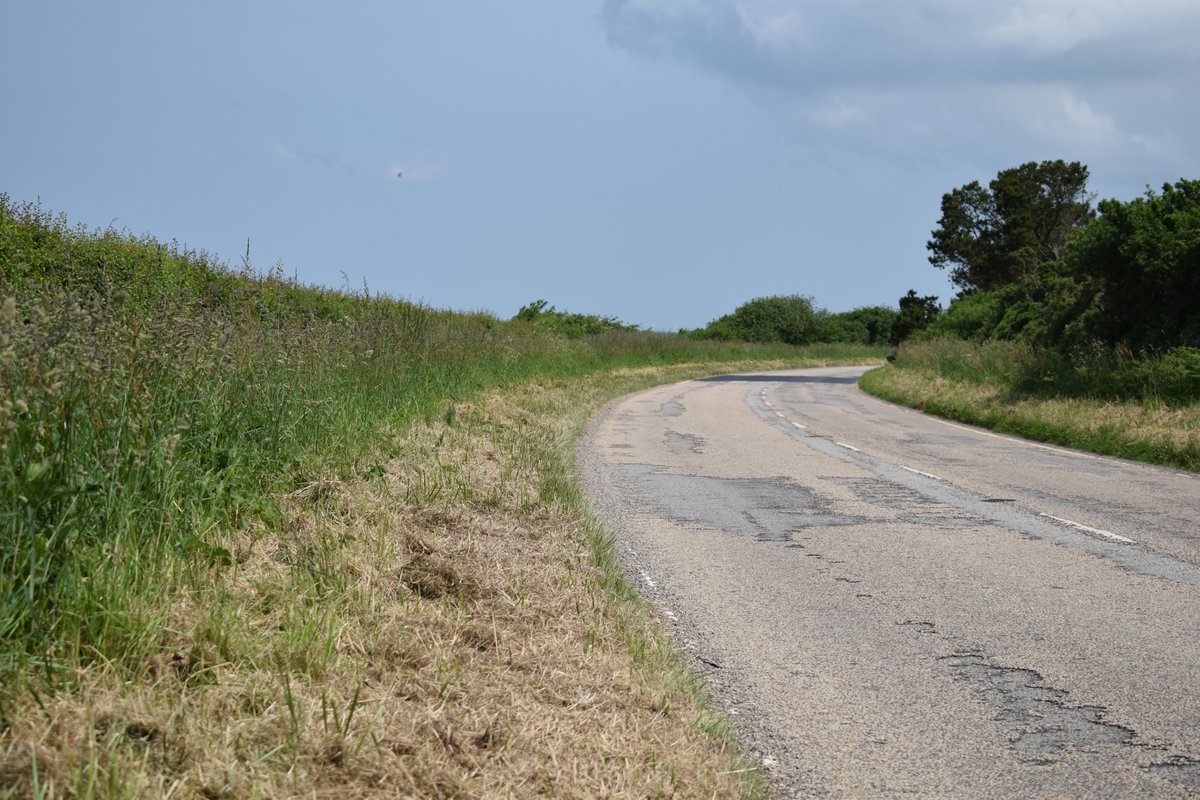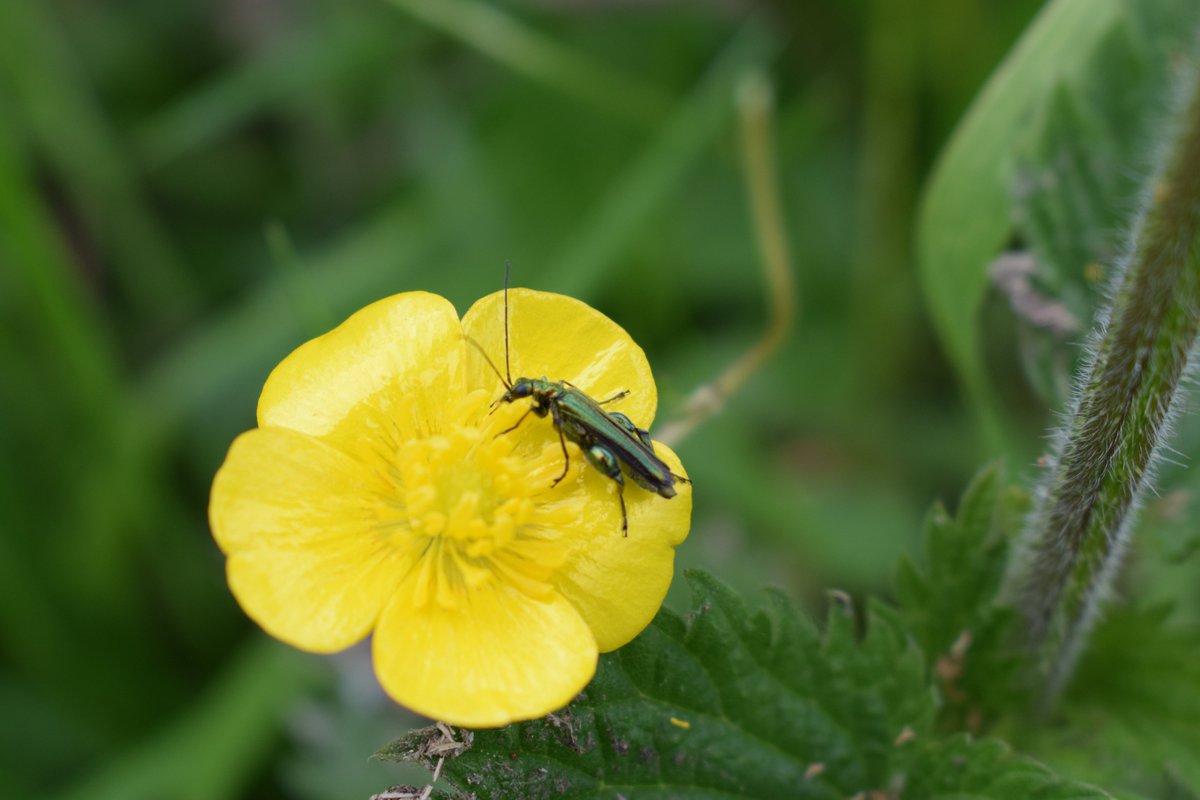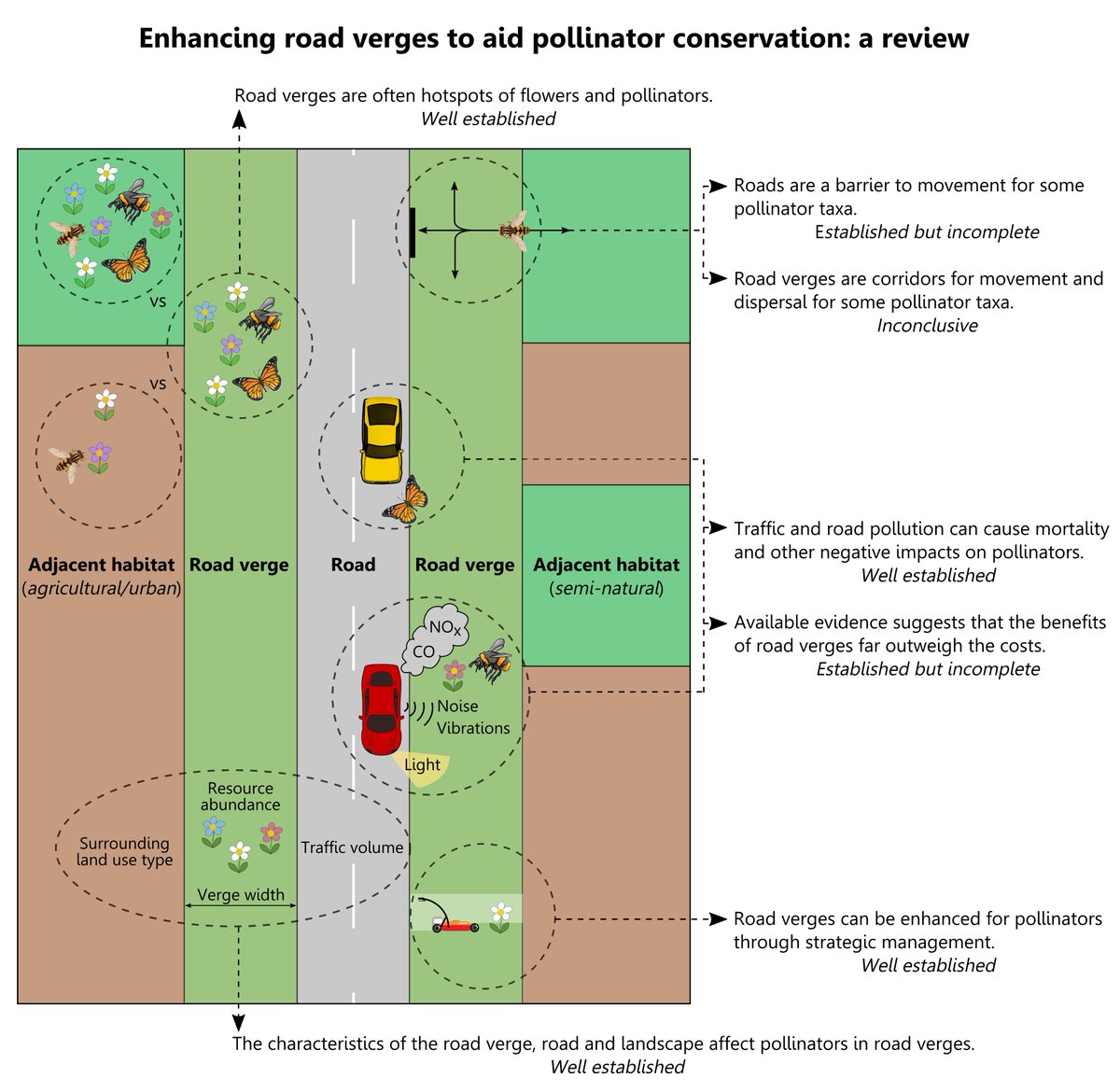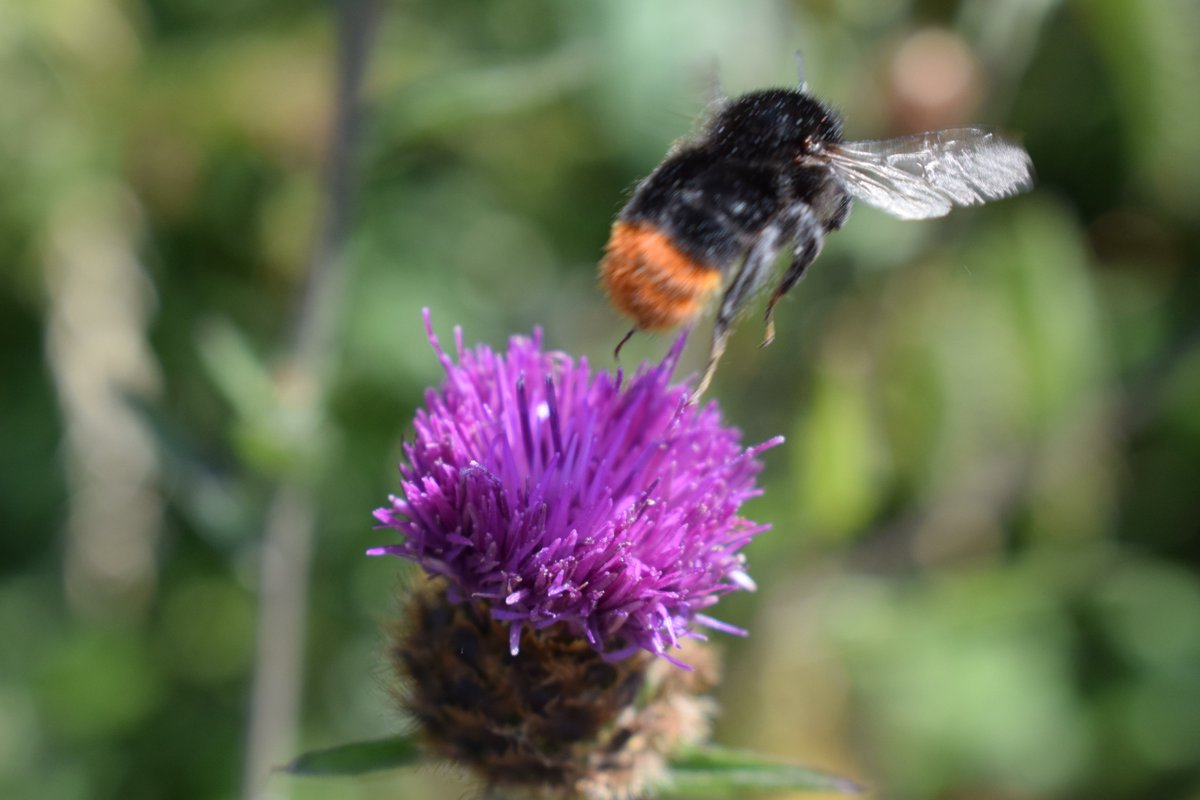Road verges can provide habitats for pollinators such as #bees, butterflies & beetles.  https://abs.twimg.com/emoji/v2/... draggable="false" alt="🐝" title="Honigbiene" aria-label="Emoji: Honigbiene">
https://abs.twimg.com/emoji/v2/... draggable="false" alt="🐝" title="Honigbiene" aria-label="Emoji: Honigbiene"> https://abs.twimg.com/emoji/v2/... draggable="false" alt="🦋" title="Schmetterling" aria-label="Emoji: Schmetterling">
https://abs.twimg.com/emoji/v2/... draggable="false" alt="🦋" title="Schmetterling" aria-label="Emoji: Schmetterling"> https://abs.twimg.com/emoji/v2/... draggable="false" alt="🌻" title="Sonnenblume" aria-label="Emoji: Sonnenblume">
https://abs.twimg.com/emoji/v2/... draggable="false" alt="🌻" title="Sonnenblume" aria-label="Emoji: Sonnenblume">
But are pollinators at risk from pollution & being hit by vehicles? https://abs.twimg.com/emoji/v2/... draggable="false" alt="🚗" title="Auto" aria-label="Emoji: Auto">
https://abs.twimg.com/emoji/v2/... draggable="false" alt="🚗" title="Auto" aria-label="Emoji: Auto"> https://abs.twimg.com/emoji/v2/... draggable="false" alt="💨" title="Staubwolke" aria-label="Emoji: Staubwolke"> & how can we best manage verges for pollinators?
https://abs.twimg.com/emoji/v2/... draggable="false" alt="💨" title="Staubwolke" aria-label="Emoji: Staubwolke"> & how can we best manage verges for pollinators?
Our new study addresses these Qs:
https://doi.org/10.1016/j.biocon.2020.108687
1/n">https://doi.org/10.1016/j...
But are pollinators at risk from pollution & being hit by vehicles?
Our new study addresses these Qs:
https://doi.org/10.1016/j.biocon.2020.108687
1/n">https://doi.org/10.1016/j...
Given concerns about pollinator/insect declines, road verges present a major opportunity because they…
1. Can be flower-rich habitats.
2. Cover ~1% of land in Europe/North America.
3. Are managed by relatively few organisations (e.g. local councils & highways agencies).
1. Can be flower-rich habitats.
2. Cover ~1% of land in Europe/North America.
3. Are managed by relatively few organisations (e.g. local councils & highways agencies).
Road verges are often comparable to other grasslands, so can be managed as such. BUT…
Pollinators in road verges are also exposed to pollution, roadkill etc. so we need a specific assessment of if/how we should best use them.
We reviewed 140 studies to answer the following Qs:
Pollinators in road verges are also exposed to pollution, roadkill etc. so we need a specific assessment of if/how we should best use them.
We reviewed 140 studies to answer the following Qs:
The review was a collaboration between many wonderful people @ClaireWallace95 @Beth_Roberts13 @AndWhitehouse @LynnDicks @KevinJGaston @JMBecologist & arose from a report written for Buglife: https://www.buglife.org.uk/resources/habitat-management/managing-road-verges-for-pollinators/
https://www.buglife.org.uk/resources... href="https://twitter.com/UniofExeterESI">@UniofExeterESI @CamZoology @biouea @UK_CEH @Buzz_dont_tweet
I’ll briefly address these Qs below & highlight a few of the many brilliant scientists [the ones I could find on Twitter…] behind the original studies that made answering these questions possible.
Thank you to the hundreds of scientists that contributed to these studies!
Thank you to the hundreds of scientists that contributed to these studies!
Lots of evidence shows that road verges can provide flower-rich habitats (= food) for pollinators – often hotspots of flowers & pollinators in intensively managed agricultural landscapes, where pollinator habitats are lacking.
See our previous work https://doi.org/10.1111/1365-2664.13470">https://doi.org/10.1111/1...
See our previous work https://doi.org/10.1111/1365-2664.13470">https://doi.org/10.1111/1...
See also this excellent study by @LornaCTweets et al. showing the importance of road verges for providing food for pollinators in farmland: https://doi.org/10.1016/j.agee.2017.05.007
Other">https://doi.org/10.1016/j... research about use of verges by wild bees came from @TheBeeEcologist in Australia & @MichiJen in USA.
Other">https://doi.org/10.1016/j... research about use of verges by wild bees came from @TheBeeEcologist in Australia & @MichiJen in USA.
In contrast, this important study by @Kath_Baldock et al. found that urban road verges in UK cities are currently a bit rubbish for pollinators, but provide a big opportunity for improvement (e.g. by mowing less): https://www.nature.com/articles/s41559-018-0769-y">https://www.nature.com/articles/...
There’s some evidence that pollinators also use road verges to nest, reproduce and overwinter, though more research is needed.
So road verges provide food/habitats for pollinators, BUT these benefits need to be balanced against potential negative aspects of roads…
So road verges provide food/habitats for pollinators, BUT these benefits need to be balanced against potential negative aspects of roads…
First, roads are a barrier to movement for some smaller pollinators. Though larger, mobile species (e.g. bumblebees & many butterflies) easily cross even very large, busy roads.
By contrast, some pollinators might use verges as wildlife corridors, but research is limited.
By contrast, some pollinators might use verges as wildlife corridors, but research is limited.
Second, pollinators in road verges risk being hit by vehicles.
Probably billions of pollinators end up as roadkill each year. Some stretches of road are roadkill hotspots, but overall the % killed is small (~0.6-7% of those in verges).
Many insights came from @skorasp et al.
Probably billions of pollinators end up as roadkill each year. Some stretches of road are roadkill hotspots, but overall the % killed is small (~0.6-7% of those in verges).
Many insights came from @skorasp et al.
Third, road pollution can deter pollinators from road verges & some road pollutants harm pollinators in lab studies (e.g. noise, NOx, salt).
One clear impact: streetlighting = v. bad for nocturnal pollinators.
Thanks to research by @Macgregor_Cal @SnellRoodLab et al.
One clear impact: streetlighting = v. bad for nocturnal pollinators.
Thanks to research by @Macgregor_Cal @SnellRoodLab et al.
Overall, the benefits of road verges to pollinators likely far outweigh the costs – phew! Though this may not always be the case (e.g. in roadkill hotspots) & there’s still plenty more to learn.
So, how should we manage our road verges to enhance them for pollinators?
So, how should we manage our road verges to enhance them for pollinators?
Here are our management recommendations for enhancing road verges for pollinators.
I’ll highlight three examples that are most strongly supported by evidence.
I’ll highlight three examples that are most strongly supported by evidence.
Management 1. Create high quality habitats on new/existing road verges
Obvious, but doing so in the first instance is much easier than retrofitting. See the wonderful work of @PhilSterling3/ @DorsetCouncilUK & other egs in @Love_plants Best Practice Guide: https://www.plantlife.org.uk/uk/our-work/publications/road-verge-management-guide">https://www.plantlife.org.uk/uk/our-wo...
Obvious, but doing so in the first instance is much easier than retrofitting. See the wonderful work of @PhilSterling3/ @DorsetCouncilUK & other egs in @Love_plants Best Practice Guide: https://www.plantlife.org.uk/uk/our-work/publications/road-verge-management-guide">https://www.plantlife.org.uk/uk/our-wo...
Management 2. Reduce mowing frequency to 0-2 cuts/year
Mowing = important for maintaining grasslands and can be important for providing visibility and safety for road users.
BUT mowing is often excessive, which removes flowers & probably kills pollinators/eggs/larvae.
Mowing = important for maintaining grasslands and can be important for providing visibility and safety for road users.
BUT mowing is often excessive, which removes flowers & probably kills pollinators/eggs/larvae.
So best to cut verges 1-2x/year & leave some parts uncut.
Less mowing (where safe to do so) = good for pollinators AND saves £££ = win-win.
@CornwallCouncil have just reduced urban verge mowing from ~8x/year to 2-3x = great for pollinators!
https://www.cornwall.gov.uk/council-and-democracy/council-news-room/media-releases/news-from-2020/news-from-june-2020/to-mow-or-to-grow-how-halving-the-cut-will-get-our-town-verges-buzzing/">https://www.cornwall.gov.uk/council-a...
Less mowing (where safe to do so) = good for pollinators AND saves £££ = win-win.
@CornwallCouncil have just reduced urban verge mowing from ~8x/year to 2-3x = great for pollinators!
https://www.cornwall.gov.uk/council-and-democracy/council-news-room/media-releases/news-from-2020/news-from-june-2020/to-mow-or-to-grow-how-halving-the-cut-will-get-our-town-verges-buzzing/">https://www.cornwall.gov.uk/council-a...
Management 3. Reduce impacts of streetlighting
Streetlights can be important for safety, but they attract/confuse nocturnal pollinators.
Pollinators might benefit a lot from ↓ lighting duration/no. of streetlights (where possible) & using less harmful lighting technologies.
Streetlights can be important for safety, but they attract/confuse nocturnal pollinators.
Pollinators might benefit a lot from ↓ lighting duration/no. of streetlights (where possible) & using less harmful lighting technologies.
Finally, not all road verges are equal.
We should focus enhancements for pollinators on larger, wider road verges, along less busy roads, because these often support richer pollinator communities, & have less pollution & risk of roadkill.
We should focus enhancements for pollinators on larger, wider road verges, along less busy roads, because these often support richer pollinator communities, & have less pollution & risk of roadkill.
Of course, there are plenty of other practical considerations.
We especially need to consider road user safety & management costs. But there’s a strong environmental/social/financial case for enhancing nature in verges due to benefits we get back.
See https://doi.org/10.1111/1365-2664.13556">https://doi.org/10.1111/1...
We especially need to consider road user safety & management costs. But there’s a strong environmental/social/financial case for enhancing nature in verges due to benefits we get back.
See https://doi.org/10.1111/1365-2664.13556">https://doi.org/10.1111/1...
To summarise: Road verges are often pollinator hotspots, which are somewhat negatively impacted by traffic collisions and pollution but can provide valuable habitats and be enhanced further through strategic management.
See the full paper for more info: https://doi.org/10.1016/j.biocon.2020.108687">https://doi.org/10.1016/j...
See the full paper for more info: https://doi.org/10.1016/j.biocon.2020.108687">https://doi.org/10.1016/j...
In the UK, Plantlife’s fantastic campaign to manage road verges for nature has >110k signatures & has got many councils & highways managers onboard. Thanks to the hard work of @katefpetty @DrTrevorDines @Archie_Thomas & @Love_plants team.
Pls sign/share: https://plantlife.love-wildflowers.org.uk/roadvergecampaign">https://plantlife.love-wildflowers.org.uk/roadverge...
Pls sign/share: https://plantlife.love-wildflowers.org.uk/roadvergecampaign">https://plantlife.love-wildflowers.org.uk/roadverge...
And if you’ve made it this far, and still want to learn more about road verges – congratulations!
Please do get in contact – especially if you’re a Council or highways manager who is interested in discussing how you might implement our recommendations.
#BeesNeeds #beesneedsweek
Please do get in contact – especially if you’re a Council or highways manager who is interested in discussing how you might implement our recommendations.
#BeesNeeds #beesneedsweek

 Read on Twitter
Read on Twitter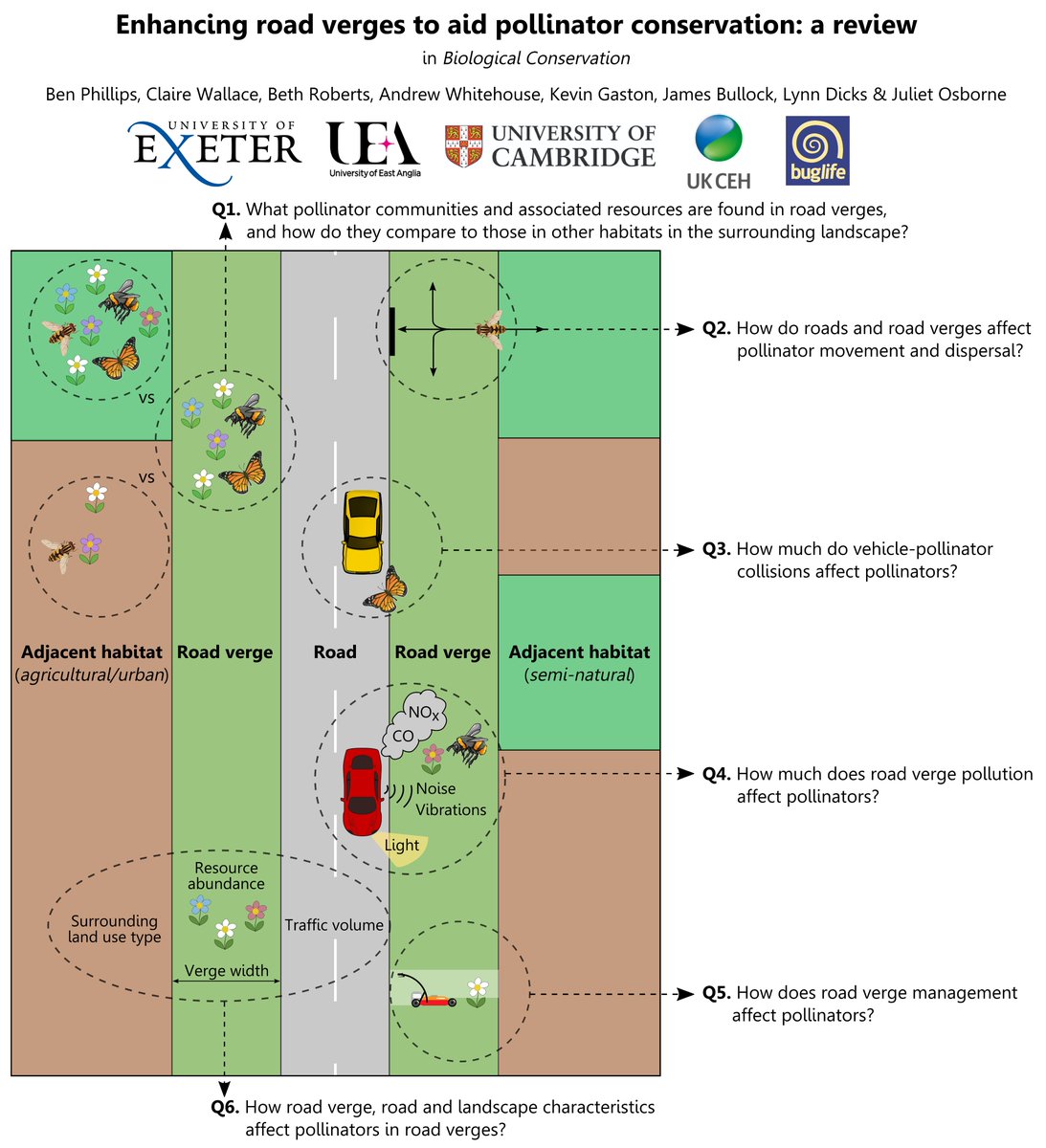 https://abs.twimg.com/emoji/v2/... draggable="false" alt="🦋" title="Schmetterling" aria-label="Emoji: Schmetterling">https://abs.twimg.com/emoji/v2/... draggable="false" alt="🌻" title="Sonnenblume" aria-label="Emoji: Sonnenblume">But are pollinators at risk from pollution & being hit by vehicles? https://abs.twimg.com/emoji/v2/... draggable="false" alt="🚗" title="Auto" aria-label="Emoji: Auto">https://abs.twimg.com/emoji/v2/... draggable="false" alt="💨" title="Staubwolke" aria-label="Emoji: Staubwolke"> & how can we best manage verges for pollinators?Our new study addresses these Qs: https://doi.org/10.1016/j..." title="Road verges can provide habitats for pollinators such as #bees, butterflies & beetles. https://abs.twimg.com/emoji/v2/... draggable="false" alt="🐝" title="Honigbiene" aria-label="Emoji: Honigbiene">https://abs.twimg.com/emoji/v2/... draggable="false" alt="🦋" title="Schmetterling" aria-label="Emoji: Schmetterling">https://abs.twimg.com/emoji/v2/... draggable="false" alt="🌻" title="Sonnenblume" aria-label="Emoji: Sonnenblume">But are pollinators at risk from pollution & being hit by vehicles? https://abs.twimg.com/emoji/v2/... draggable="false" alt="🚗" title="Auto" aria-label="Emoji: Auto">https://abs.twimg.com/emoji/v2/... draggable="false" alt="💨" title="Staubwolke" aria-label="Emoji: Staubwolke"> & how can we best manage verges for pollinators?Our new study addresses these Qs: https://doi.org/10.1016/j..." class="img-responsive" style="max-width:100%;"/>
https://abs.twimg.com/emoji/v2/... draggable="false" alt="🦋" title="Schmetterling" aria-label="Emoji: Schmetterling">https://abs.twimg.com/emoji/v2/... draggable="false" alt="🌻" title="Sonnenblume" aria-label="Emoji: Sonnenblume">But are pollinators at risk from pollution & being hit by vehicles? https://abs.twimg.com/emoji/v2/... draggable="false" alt="🚗" title="Auto" aria-label="Emoji: Auto">https://abs.twimg.com/emoji/v2/... draggable="false" alt="💨" title="Staubwolke" aria-label="Emoji: Staubwolke"> & how can we best manage verges for pollinators?Our new study addresses these Qs: https://doi.org/10.1016/j..." title="Road verges can provide habitats for pollinators such as #bees, butterflies & beetles. https://abs.twimg.com/emoji/v2/... draggable="false" alt="🐝" title="Honigbiene" aria-label="Emoji: Honigbiene">https://abs.twimg.com/emoji/v2/... draggable="false" alt="🦋" title="Schmetterling" aria-label="Emoji: Schmetterling">https://abs.twimg.com/emoji/v2/... draggable="false" alt="🌻" title="Sonnenblume" aria-label="Emoji: Sonnenblume">But are pollinators at risk from pollution & being hit by vehicles? https://abs.twimg.com/emoji/v2/... draggable="false" alt="🚗" title="Auto" aria-label="Emoji: Auto">https://abs.twimg.com/emoji/v2/... draggable="false" alt="💨" title="Staubwolke" aria-label="Emoji: Staubwolke"> & how can we best manage verges for pollinators?Our new study addresses these Qs: https://doi.org/10.1016/j..." class="img-responsive" style="max-width:100%;"/>
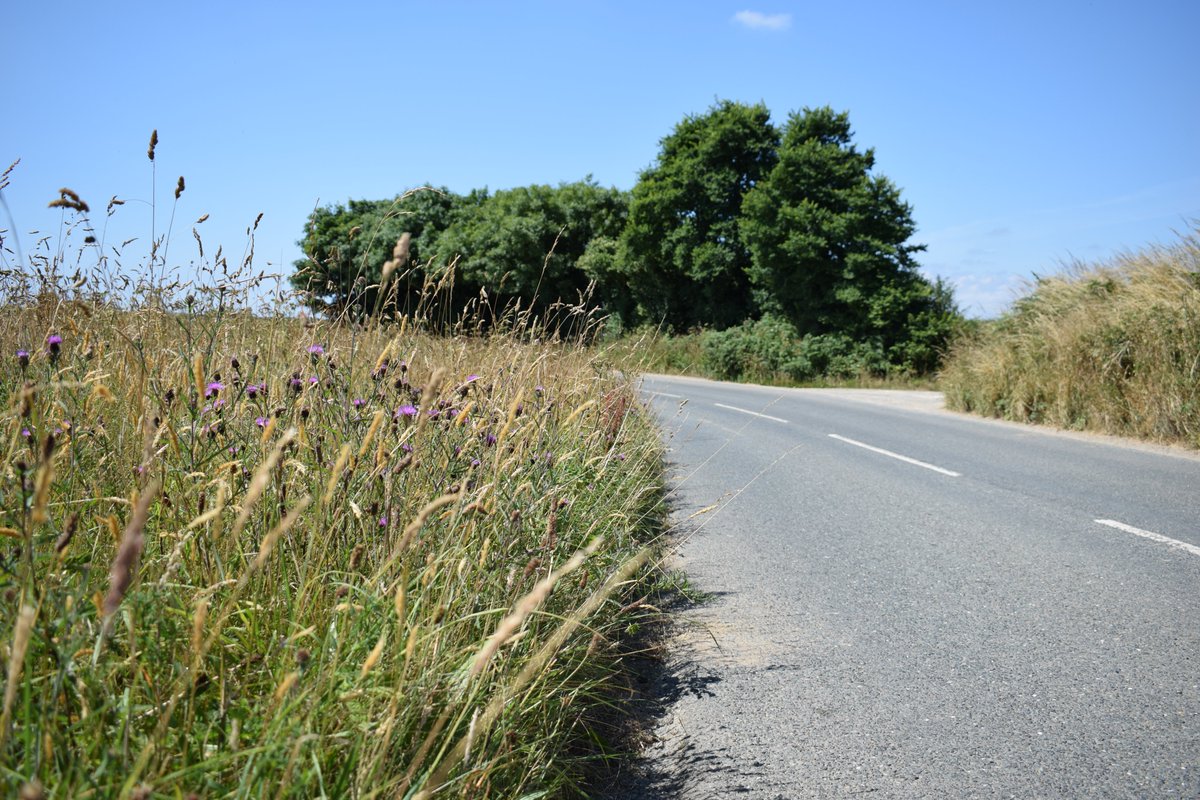
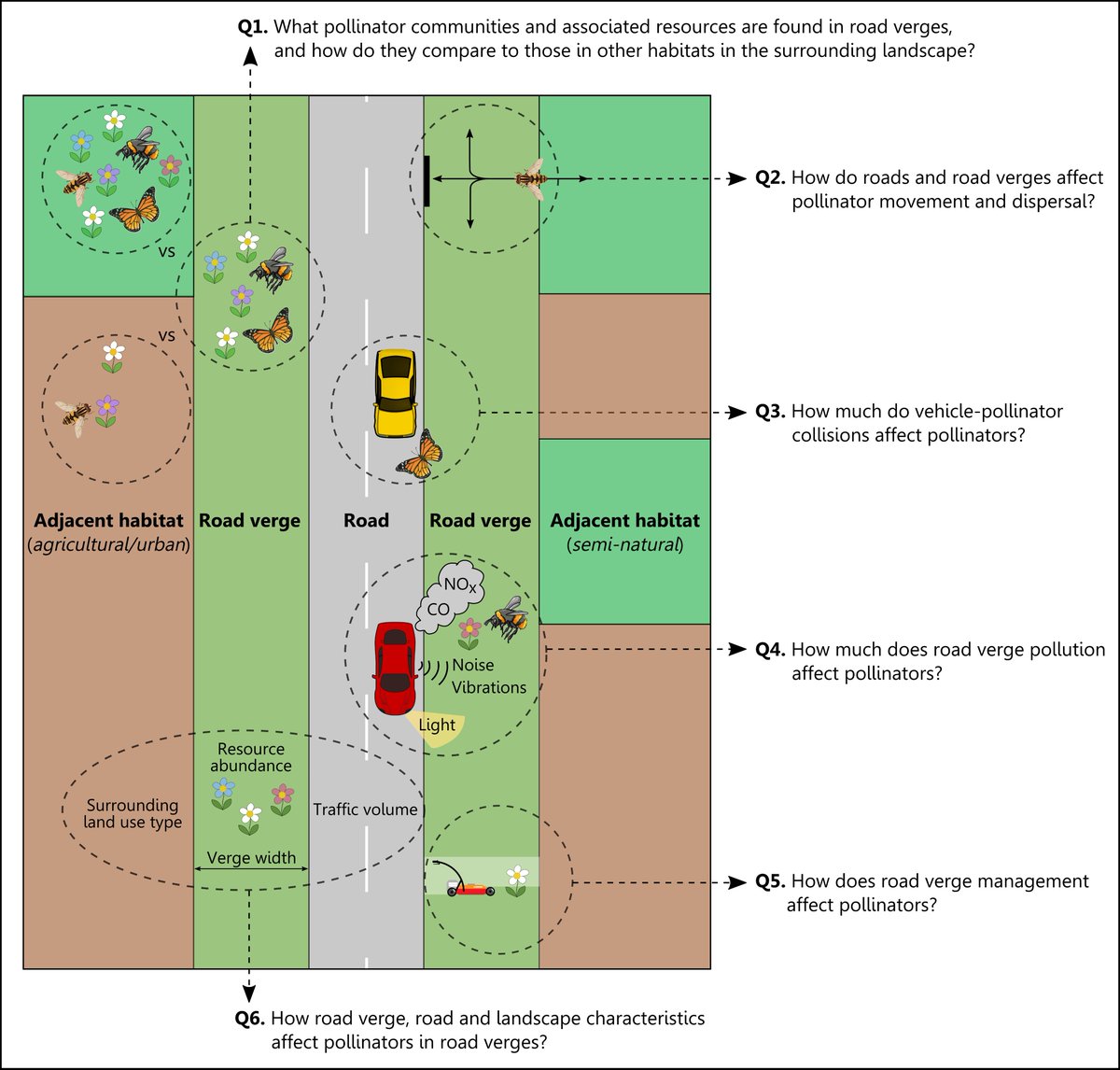
![I’ll briefly address these Qs below & highlight a few of the many brilliant scientists [the ones I could find on Twitter…] behind the original studies that made answering these questions possible.Thank you to the hundreds of scientists that contributed to these studies! I’ll briefly address these Qs below & highlight a few of the many brilliant scientists [the ones I could find on Twitter…] behind the original studies that made answering these questions possible.Thank you to the hundreds of scientists that contributed to these studies!](https://pbs.twimg.com/media/Ec376b6WAAIDBOR.jpg)
